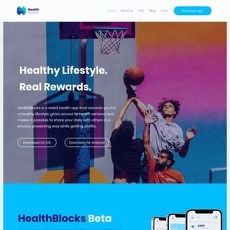Decentralized Physical Infrastructure (DePIN)
Break down the Basics: Everything You Need to Know About Decentralized Physical Infrastructure (DePIN)
Do you get a kick out of innovative tech that intertwines the concrete with the virtual? Brace yourself because you've just struck gold. We're slicing through the complexities to give you the nitty-gritty on Decentralized Physical Infrastructure (DePIN) and its potential to flip the script on traditional infrastructure models.
The Big Fat Problem
Consider this scenario: a handful of colossal entities, with their enormous, centralized facilities, have had a stranglehold on essential services – energy supply, data storage, and computational might. Such a grip rings alarm bells for several reasons:
- Single Points of Failure - When one mega-plant sneezes, the whole grid catches a cold.
- Energy Inefficiency - Transporting energy or data over vast distances is like carrying water with a leaky bucket.
- Digital Despots - A market with limited players often means less innovation and higher prices for end-users.
But imagine a world where these problems are relics of the past. Sounds utopian? Not quite, as that's where DePIN strides in.
The Silver Lining: DePIN
In the backdrop of these centralized woes, DePIN emerges as a hero. Picture an ecosystem evenly distributing its services through countless localized nodes instead of a few Goliaths. Here's what makes it downright revolutionary:
- Resilience: A decentralized network can take hits like a champ and keep ticking—say goodbye to system-wide outages.
- Efficiency: Localizing infrastructure means your energy and data have less physical distance to travel, which equals less waste and lag.
- Empowerment: Smaller-scale setups invite community participation, so Joe from the grocery store can also be a micro-energy provider.
Such a framework lays the groundwork for a radical shift in power dynamics. And that's just scratching the surface!
I've seen firsthand just how bustling with potential DePIN platforms are. For example, companies spearheading the decentralization of electricity through localized grids have significantly reduced waste while bolstering reliability. The era of a single entity telling you who, what, when, and where about your power supply could be seeing its final days.
So now, with your curiosity piqued, you must be wondering, "Okay, but how does this wizardry actually work?" Patience, my friend—we'll unravel the mysteries of DePIN in the coming segment and show you how blockchain serves as the linchpin for this transformative endeavor. Stay tuned, as we're just powering up!
Unpacking DePIN: The What's and How's
Imagine a world where your next-door neighbor's solar panels could power your home when your lights go out, or where the excess storage space on your computer could help a local business handle their big data. Friends, we're not talking science fiction; we're talking Decentralized Physical Infrastructure (DePIN). But what exactly is this disruptive concept, and how does it function? Let's clear the mist and get to the heart of DePIN.
Clearing the Clouds: Defining DePIN
DePIN tears down the monolithic structures of service distribution and rebuilds it in a neighborhood of collaborative units. Imagine small, autonomous cells in a beehive, each playing a vital role in the health of the ecosystem. That's DePIN at its core—a hive of local facilities and resources working in harmony for the greater good of the community.
Blockchain's Role in DePIN
Now, how does blockchain fit in the DePIN puzzle? It's quite straightforward. Think of blockchain as the invisible hand, guiding the equitable and transparent allocation of resources through incentive-based tokens. These tokens aren't just digital currency; they're the fuel that drives the construction and circulation of valuable hardware essentials. The marriage between blockchain and DePIN ensures a system that is not only efficient but also governed by the principles of fairness and profitability.
DePIN in Action: Real World Applications
The canvas for DePIN's real-world applications is vast. Let's paint a few strokes together:
- Picture a decentralized power grid deflecting the risks of large-scale outages.
- Envision accessible community-driven internet services with the help of local mesh networks.
- Visualize cloud storage, liberated from the constraints of mega-corporate data centers, allowing for a seamless, scalable, and secure data exchange.
But it's not just about knowing the theory; it's about seeing it in action. Consider the case of Brooklyn Microgrid, a project where people trade locally-generated solar power amongst themselves. This is DePIN breathing life into communities, creating a resilient, self-sustaining ecosystem that empowers local economies and individuals.
"DePIN is not just repainting the landscape; it's changing the very canvas we paint our dreams on." – Anonymous Innovator
Does the idea of decentralized peer-to-peer energy trading spark an interest? Are you curious how these self-sustaining systems compare to the centralized infrastructures we've grown so accustomed to? Hang tight, because up next, we're cutting through the noise to highlight the contrasts between the two. Keep reading to see how DePIN might just tip the scales in favor of a more empowered, connected future.
Decentralized vs Centralized Infrastructure: What's the Difference?
Prepare to see the age-old battle of David vs. Goliath reimagined, as we explore the clash of decentralized and centralized infrastructure. It's the showdown that's redefining our technological landscape—and you've got a front-row seat.
How Centralized Infrastructure Works
Let's paint a picture of centralized infrastructure: imagine a towering skyscraper, housing all the power, all the control—where the likes of Google and Amazon reign supreme. They're the gatekeepers, doling out storage and computing capacity from their proprietary fortresses. But with this concentration of power comes a single point of failure, and when these systems falter, they falter hard.
The Essence of Decentralized Infrastructure
Now, envision a vibrant marketplace—a network of stalls, each run by different folks, each contributing their unique piece to a collective whole. That's decentralized infrastructures for you. Nodes, scattered around the globe, interlink to create a web of shared resources, cutting out the middleman and any single point of failure. It's the very essence of a shared economy, realized through tech.
- By decentralizing, we step away from the fragility of having all eggs in one basket.
- Redundancy becomes our friend, not our foe, making services more robust and reliable.
- It's a deconstruction of digital powerhouses, a chance to democratize the way our digital world functions.
But let's not just speak in abstracts; consider the real impact of decentralized systems. Picture the peer-to-peer empowerment that transformed the music industry. Imagine the same transformation poised to reshape data storage, energy distribution, and a myriad of other sectors.
As William Gibson once said, "The future is already here—it's just not evenly distributed." Decentralized infrastructure is about taking that uneven future and spreading it out for everyone to access and influence.
So, after walking side by side through the mechanics of these systems, I have to ask: Do you see the waves of change on the horizon? Are you feeling the groundswell of this infrastructure revolution?
Hold that thought, and as we turn the page to the next gripping segment, I'll unveil the immense perks of catching this DePIN wave—a narrative that promises to rip the advantages right off the page.
The Perks of Riding the DePIN Wave
Curious about what's in it for you with DePIN? Well, let me unravel the tapestry of benefits that Decentralized Physical Infrastructure (DePIN) ushers in for users like you. When I say it's a game-changer, I'm not just blowing smoke; I've seen the impact first-hand. Here's what you need to know:
Power to the People
“In the end, it's not the years in your life that count. It's the life in your years.” – Abraham Lincoln
Lincoln might have been onto something beyond his time. In the lens of DePIN, his quote speaks volumes about the essence of empowerment. DePIN hands back control to local communities. It ensures your voice and needs directly influence the distribution and quality of services. No longer are we mere cogs in the wheel of giant centralized systems; with DePIN, you're part of the system – influential and indispensable. Imagine a world where your local energy grid is powered by your neighbor's solar panels, and in turn, you contribute with your own resources. That's more than just infrastructure; it's a society thriving through collaboration.
Breaking the Monopoly
Monopolies—yes, we're all weary of them. They hike prices, limit choices, and frankly, they don't always play fair. DePIN introduces a competitive ecosystem where not one, but numerous providers strive for your attention with better services and competitive pricing. This isn't just good news; it's a whole new economic narrative where small-scale providers have a fighting chance against the big fish.
Scalability and Resilience
Have you ever faced the frustration of service outages when a central provider goes down? DePIN laughs in the face of such challenges. With a distributed network model, scalability is as easy as adding more nodes to the network rather than overhauling an entire facility. More so, this constellation of nodes means if one falls, others quickly pick up the slack, ensuring an unbeatable level of resilience. Studies are already showing how decentralized networks can drastically improve uptime and service reliability.
With all these mouth-watering benefits, you might wonder, "How do I get involved?" Imagine becoming part of something larger than yourself, while at the same time ensuring your own independence and security. Are you ready to unlock the full potential of DePIN, and perhaps, play a role in shaping the future of decentralized infrastructure? What steps can you take to not just embrace, but actively contribute to this burgeoning ecosystem?
Keep reading, because next up, we'll explore exactly how you can immerse yourself in the DePIN landscape without missing a beat. Ever thought about how to begin this journey? Well, stay tuned – I'll guide you through the process step by step.
Getting into the DePIN Lane: How to Embrace It
Ready to dive into the world of DePIN? There's a sense of excitement that comes with stepping into a new technological paradigm. The allure of decentralized physical infrastructure (DePIN) is not just about the buzz—it's about paving the way towards a future that is resilient, scalable, and incredibly user-empowering.
Step 1: Arm Yourself with Knowledge
Before you can truly harness the power of DePIN, you need to understand it. It's a bit like learning to navigate a spaceship; you have to know what every button does before you can fly among the stars. So, invest some time in getting to grips with the intricacies of decentralized systems. Follow industry news, read up on current applications and envision the potential that DePIN holds. Knowledge is power, and in this case, it could quite literally be the power to transform infrastructure.
Step 2: Taking the First Leap
Remember, every mighty oak tree was once a tiny acorn. Start small by integrating DePIN solutions into your business or personal life. Support startups and platforms that leverage DePIN for greater good, whether through crowdfunding, beta testing new services, or simply by using decentralized applications in your daily routine.
- Embrace peer-to-peer platforms for cleaner, more efficient energy trading.
- Consider participating in decentralized cloud storage solutions to safeguard your data.
- Look out for community-based projects in need of hardware or bandwidth contributions.
“Alone we can do so little, together we can do so much.” – Helen Keller
This quote resonates deeply with the DePIN ethos. It's about collective action, pooling resources, and shared success, which brings an unbreakable strength to our communities.
Now, I know you've got a lot to ponder and probably a ton of questions bubbling up. Like, where do you find resources that can aid you in your DePIN journey? How can you educate yourself further on this topic? And what are the essentials you need to grasp before moving forward?
Stick around, because we've got a treasure trove of hand-picked resources lined up for you. And hey, this just might be the nudge you needed to kickstart your decentralized aspirations. So, ask yourself:
Are you ready to become part of something that's not just a trend, but a transformation?
Some Handy Resources for your DePIN Journey
Navigating the world of Decentralized Physical Infrastructure (DePIN) can seem daunting, but fear not! There is a treasure trove of resources out there to help you get your bearings. With key guides and tools, you'll be ready to join the movement and take advantage of all that DePIN has to offer. Let's jump right into some of the essential resources that can help steer your DePIN exploration.
Resource 1: Decentralized Energy Grids Explained
Imagine powering your home or business with energy shared from someone's solar panels across town. This is precisely what decentralized energy grids enable—and they're a cornerstone of DePIN. Websites such as Energy Web Foundation offer a plethora of insights and developments on how decentralized energy systems work. They're actively researching and promoting energy blockchain technology to create a more resilient, and efficient energy network.
Resource 2: Storage Solutions at Scale
Filecoin is not just a cryptocurrency; it's a decentralized storage network that transforms cloud storage into an algorithmic market. This network allows users to rent out their spare storage space, potentially turning every computer into a part of a vast, global cloud storage system. If you're curious about the practical side of DePIN and storage services, this is a resource that's too good to miss.
And let's not stop there. Have you ever considered the implications of DePIN in the realm of networking and content delivery? Decentralized CDNs (Content Delivery Networks) are reshaping the way content is distributed across the web. Resources such as Theta provide information on decentralized video streaming and content delivery, certain to open your eyes to the innovative applications of DePIN there too.
Looking beyond, have you contemplated the impact of decentralized manufacturing? As we move towards a future where 3D printing and local production become mainstream, it's resources like 3D Hubs that will guide you on how manufacturing can become a distributed service, disrupting the traditional, centralized ways of creating and distributing products.
Now, with these resources in hand, the journey feels less like a rough trek and more like an exciting adventure. But what lies ahead in this terrain? What challenges could disrupt the decentralized utopia, and more importantly, how can they be overcome? Stick around, my future-thinking friend. There's more to explore, and the next step could unlock even greater insights into the transformative power of DePIN.
Addressing Future Challenges with DePIN
There's no denying that Decentralized Physical Infrastructure (DePIN) is a groundbreaking shift promising to reshape our world. But, like every cutting-edge innovation, it's not without hurdles. Let's eye these challenges squarely, sketch out the bumps in the road, and map out strategies to navigate through them.
Challenge 1: Spurring Individual Participation
First up, incentivization. The crux of the issue? Convincing folks to chip in with their resources to bolster the DePIN ecosystem. Now, you may ponder, "How do we do that?" It's about crafting a reward system that's as enticing as the aroma of freshly baked cookies. Take, for example, providing tokens that can be exchanged for goods, services, or even cold hard cash. It's this tokenization that could turn the tide, prodding people to join the movement.
Challenge 2: Fortifying the Fort
Next up, we've got security – the shield against turmoil in the DePIN realm. With vast networks comes vast responsibility. We're talking firewalls, encryption, and all that techy armor needed to deflect cyber threats and maintain trust. But it's more than just setting up defenses; we must build an agile guard that evolves faster than the threats themselves. In this digital age, having a stalwart defense is akin to locking your treasured possessions in a vault.
Now let's stitch these pieces together and see the full picture. DePIN is not just about merging bits and bytes with bricks and mortar; it's about crafting a future that dances to the tune of efficiency and interconnection. A world where blackouts and data monopolies become tales of the past.
As we trace the contours of tomorrow, it's clear DePIN will be the cornerstone of a resilient, bustling digital ecosystem. With open arms and nimble minds, we should welcome this wave of progress. Are you geared up to join on this enthralling ride towards the horizon?




